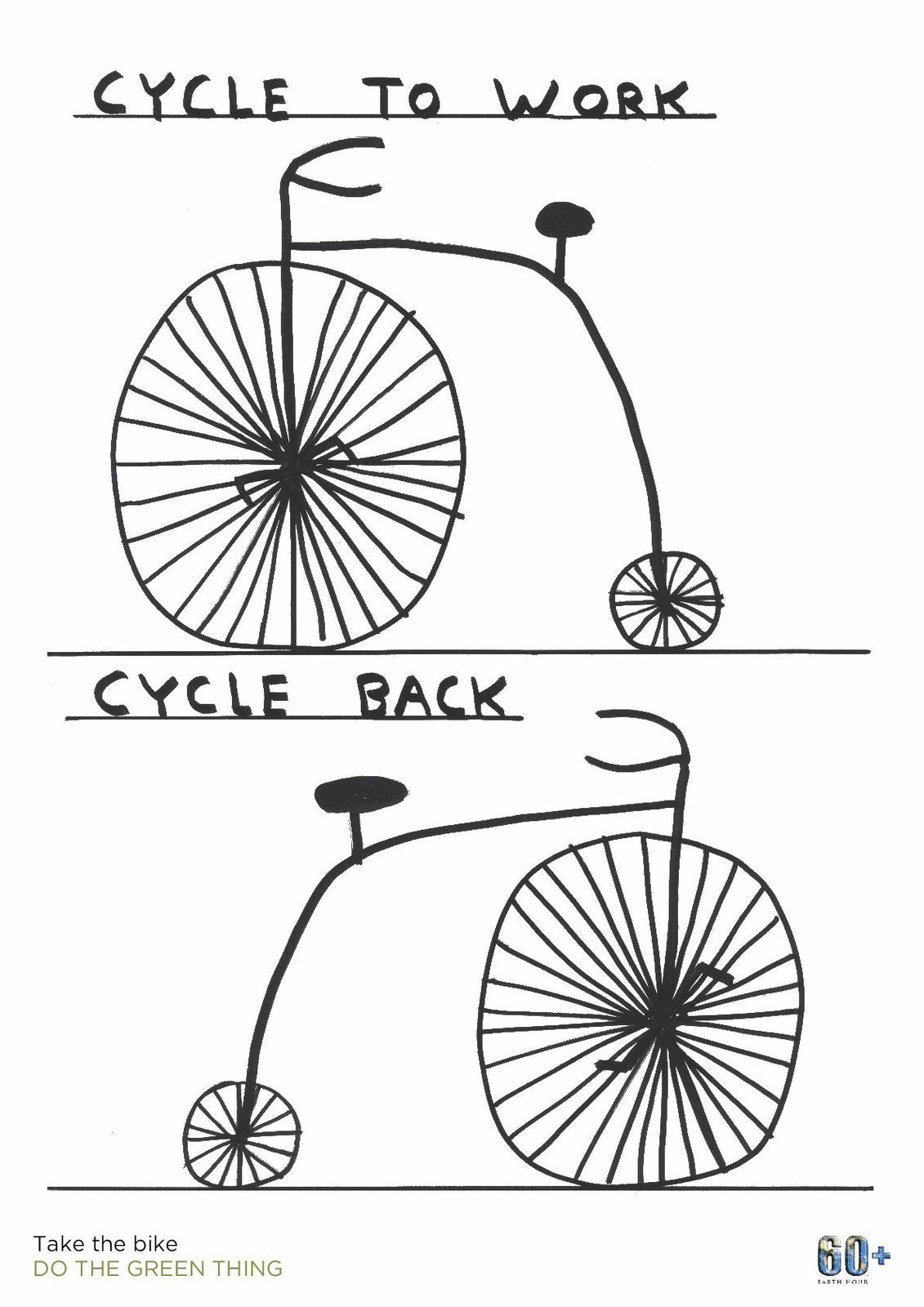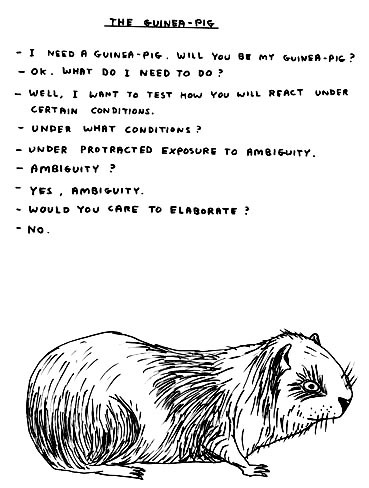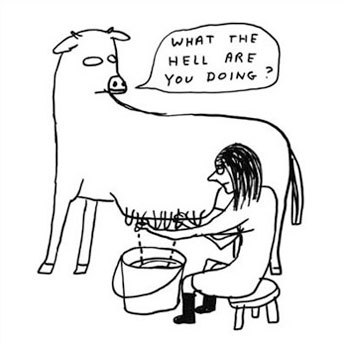









David Shrigley
Opening last week at Two Rooms. There was an article in the herald in the weekend about his residency.
“What I do is meant to communicate very directly as it uses the same language as the advertising and posters that plaster your visual environment all the time,” he says. “It’s using a language that already exists in a way, albeit it’s my take on that.”
A look into his studio (youtube video)
In this interview (Time Out) he talks about the book as a medium / a mode of distribution:
Do you think that the book medium sort of gets around some of the exclusivity that’s inherent in the art world?’
DS: ‘I think it does. Everybody knows how to read a book, but not everybody knows how to walk around an art gallery. When you’re in Chelsea in New York, when you’re walking around Phillips auction house, it’s an intimidating experience for people who might like art, but don’t feel very welcomed there. Whereas, if you take a book off of a bookshelf in a bookstore then obviously you know what to do with it. You’re not really sure whether you should smile or laugh in the art gallery, or whether you’re allowed to rub your chin, or scratch your head, or whatever. For the likes of my sister, for example, she wouldn’t feel very comfortable at some fancy gallery in New York, and wouldn’t really know what to do. She’d sort of look around and look at her watch and fiddle with her Blackberry. But books are accessible.’
And his process:
DS: ‘I throw a lot away. My attitude towards it is very free, because I know there’s only a one in four chance that I’ll keep the drawing in question. And at that point you’re not really worried too much about making a mess of it.’
Also mentioned in this interview on his website:
I draw them very quickly and then I think about them for a long time to try to figure out if they’re any good. I have a box that I put drawings into when they’re finished. It is called my ‘artistic distance’ box. I leave the drawings in the box for weeks or months (sometimes years) and then I have a look at them again. If they’re still no good after 2 years I throw them away. If they’re no good in the first place I don’t even put them in the box, they go straight in the bin.
I think what I’m interested in is that, if you choose to read into them at all, his drawings are cynical and totally uninhibited, and this completely shapes your approach as the viewer. Since they are so offhand and bizarre you instinctively know you’re not meant to take them seriously. His style offsets any seriousness you could possibly read into his drawings, so even when they are dark or morbid, they aren’t heavy with it. If they seem at all philosophical, you know it’s more likely he’s just taking the piss out of philosophy. I think there’s a lot of power in that. Leigh Clarke said something in his artist talk about how humour always has a shadow, and I think that idea is clear in Shrigley’s drawings.
DE: ‘In your last few books, though, there’s a real clear mix of the outright funny stuff and there’s a lot of stuff that’s I think much more pained and political. Humour that I like comes from a place of anger, exasperation. I was re-reading a lot of Vonnegut recently, and then I was looking through your drawings and there was a similar sense of humour — a very dark humour that comes from a place of frustration, of wanting better for humanity.’
DS: ‘Well, I suppose it’s a cathartic thing. It enables you to say what you want to say, and vent your anger about just the lunatic, idiot world we live in. I think I’m a much saner person because I’m able to make work about how horrible people are, and how unacceptable it is that they are so horrible and how unacceptable it is that people accept how horrible these people are. I kind of assume that’s a given for everybody, that everybody feels that there are aspects of contemporary life in an advanced capitalist society that are really unacceptable, but what can we do to change it? Make stupid drawings I suppose.’
Amen.